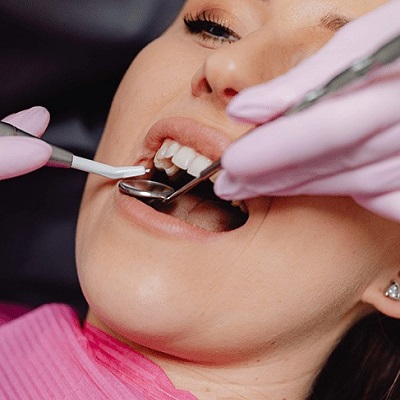
Healthy smiles boost self-confidence and indicate overall health. However, dental decay can hurt and damage teeth. Rest assured that dental fillings can restore the function and appearance of a damaged tooth. If they understand basic dental procedures, people can reduce their anxiety and make informed oral health decisions.
Patients who are unable to sleep during a dental filling procedure could rest easier knowing that it will be over soon. This guide will cover the tooth-filling process from the first consultation to post-treatment care. Each stage is crucial to filling efficacy and longevity, which improves dental health and preserves smiles for years. Let’s take this tour to learn about dental fillings and their comprehensive maintenance.
What is Dental Filling?
Dental fillings can restore damaged, worn, or decaying teeth. It’s important to treat cavities as soon as they develop to prevent them from getting worse and requiring a root canal. A dental filling is a routine procedure that improves tooth health and appearance.
Who Should get dental fillings?
Cavities are only one of numerous dental problems that general dentists can diagnose and treat. Exams, cleanings, and minor restorative procedures like fillings are typically part of their job description.
Restorative dentists replace damaged or missing teeth. They can repair cavities and place dental fillings in children.
Professionals who restore and replace teeth are prosthodontists. They can use tooth-colored materials like composite resin to match the dental filling to the native tooth, keeping its functioning and appearance.
The Steps of Dental Filling Process:
Dentists regularly use this method. Anesthesia usually relieves pain. After treatment, nonprescription painkillers can be administered.
Comfort numbing
First and foremost in the tooth-filling process is comfort. Dental work can be distressing for many people. Nobody should! We usually use a two-pronged approach to discomfort.
Initial numbing gel. Before administering a local anesthetic injection, a pre-numbing gel is usually applied to the area. This 20% benzocaine gel pre-numbs the injection site to make it more comfortable. Sometimes, te doctor skips the gel and injects it directly.
Deterioration elimination
Brown or black patches on teeth indicate bacterial deterioration. Your dentist will remove the soft patches with a spoon evacuator. Several approaches are used to ensure full eradication.
The drill is fast. A high-speed dental handpiece with diamond burs extracts most deteriorated tooth parts. High-speed drills are great at eliminating decay and shaping teeth for fillings.
Filling the space
Dental fillings come in many materials, each with its benefits. The main options are:
Molar fillings and chewed-down teeth are ideal for amalgam fillings. However, amalgam requires a box-shaped tooth. This may necessitate further dental removal.
Position the filler material.
After selecting a filling material, it is placed in the prepared tooth cavity. Material choice determines procedure. For amalgam and some composite fillings, your dentist will layer the material. This multilayer approach ensures no voids or underfilled parts, resulting in a lasting and secure repair.
Waiting for filling to harden
Various filler materials require various setting methods. Amalgam fillings set in just a few minutes. If the dentist moves slowly, the material may solidify while being inserted.
Composite fillings need LED curing to solidify. Hardening begins with the frequency of this light. The composite resin may be set in daylight, but it takes longer. If left in the sun without protection, composite resin can prematurely solidify.
Biting adjustments and posture
The dentist will adjust your bite after the filling material hardens. These changes are necessary to ensure the filling won’t disturb your biting pattern and chewing or biting will be painless.
Use articulating paper (blue paper) to plan your bite. You will be asked to bite down many times to identify discomfort or high points. After that, we’ll grind these regions until your bite feels even.
Alternatives to fillers:
The following fillings are available:
- Dental fillings are made from amalgam, a mixture of copper, tin, and mercury. These fillings may better suit rear molars. The material is durable.
- Fiber-reinforced composite fillings look like natural teeth and are constructed of resin and glass.
- The tooth-colored powdered glass bonds with the teeth. Another type of filling is glass ionomer. These fillings release fluoride to prevent tooth decay.
- Gold fillings are made from the copper-gold-other metal alloy.
What is The Cost of Dental Fillings in Islamabad?
The cost of dental fillings in Islamabad starts from PKR 6,000 per tooth. It depends on the cavity size, location, filling material, and additional operations. It is also dependent on the dentist’s expertise. For an accurate estimation, contact your clinic and get a quote.
Book a Consultation!
Dynamic Clinic PK dental fillings begin with a consultation with one of our expert dentists. You can arrange an appointment by filling out the form below or by calling us. Both choices are simple. During your consultation, our dentist will examine your teeth and address your concerns.









